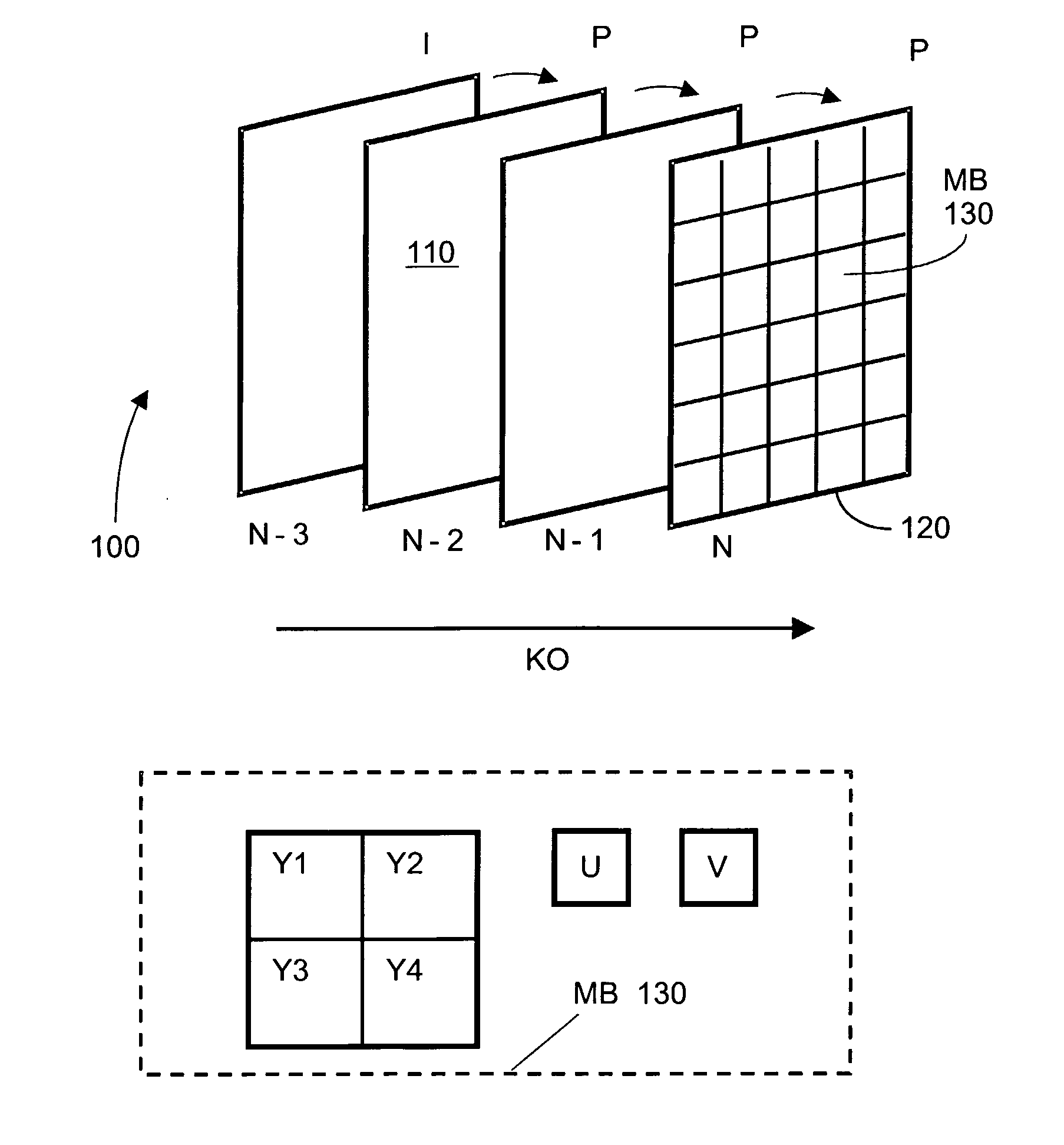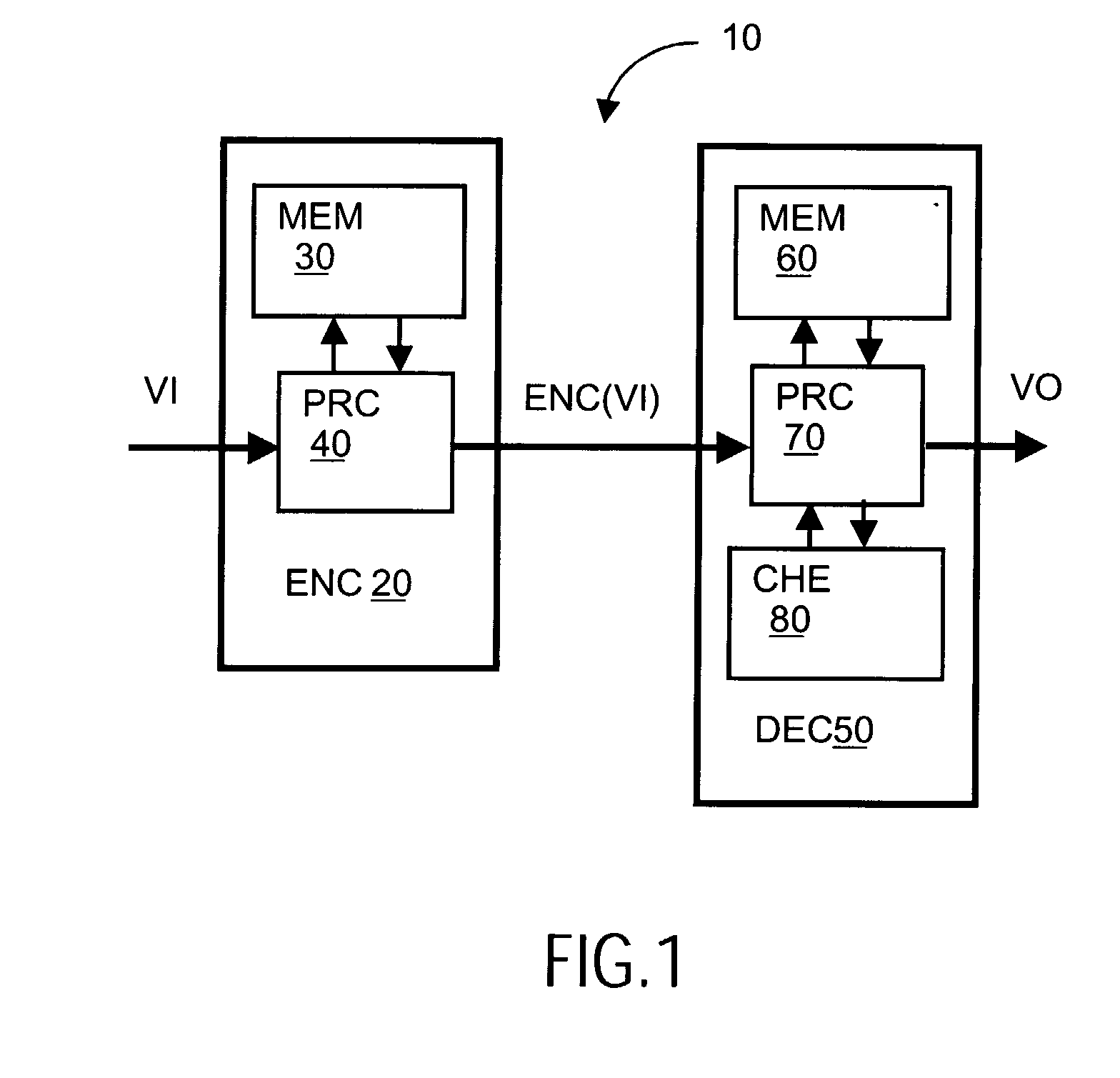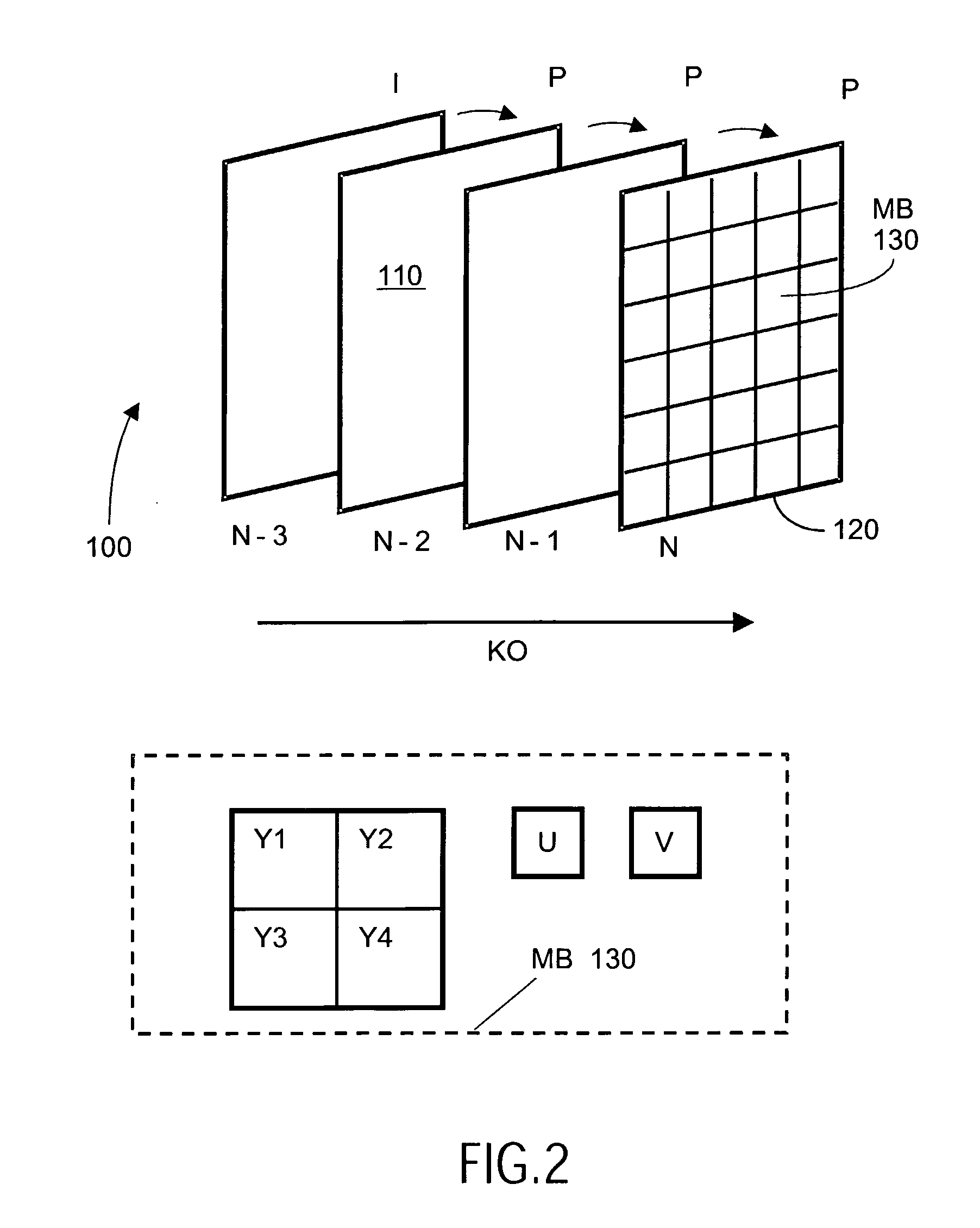Method of video decoding
- Summary
- Abstract
- Description
- Claims
- Application Information
AI Technical Summary
Benefits of technology
Problems solved by technology
Method used
Image
Examples
Embodiment Construction
[0035] Contemporary video decoders, for example video decoders configured to decode images encoded pursuant to contemporary MPEG standards, for example MPEG-4, are operable to decode compressed video data based on the order in which encoded images are received. Such an approach is generally desirable to reduce memory storage requirements and enable a relatively simpler design of decoder to be employed. Moreover, contemporary video decoders often use unified memory, for example static dynamic random access memory (SDRAM) in conjunction with a memory arbiter. Conventionally, reconstruction of predictive images is based on manipulation of macroblocks of data. When processing such macroblocks, it is customary to retrieve image regions from memory corresponding to n n×n pixels where n is a positive integer.
[0036] The inventor has appreciated that such retrieval of image regions is an inefficient process because, due to data handling in the memory, more data is frequently read from memor...
PUM
 Login to View More
Login to View More Abstract
Description
Claims
Application Information
 Login to View More
Login to View More - R&D
- Intellectual Property
- Life Sciences
- Materials
- Tech Scout
- Unparalleled Data Quality
- Higher Quality Content
- 60% Fewer Hallucinations
Browse by: Latest US Patents, China's latest patents, Technical Efficacy Thesaurus, Application Domain, Technology Topic, Popular Technical Reports.
© 2025 PatSnap. All rights reserved.Legal|Privacy policy|Modern Slavery Act Transparency Statement|Sitemap|About US| Contact US: help@patsnap.com



